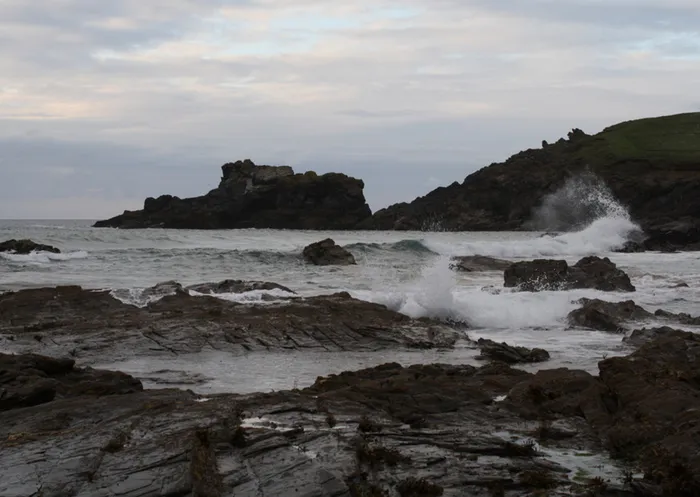97 years on, wreck unearthed by storms

Final resting place: Booby's Bay near Padstow in north Cornwall. Picture: Joe Buckingham, flickr.com Final resting place: Booby's Bay near Padstow in north Cornwall. Picture: Joe Buckingham, flickr.com
London - For nearly a century, the vast hull of the German ship that sank during the First World War has been mostly hidden from view.
But the violent storms that lashed Britain have laid bare the wreck of the SV Carl.
Giant waves have stripped away almost 3ft of sand, revealing the steel ribs of the 60ft vessel at its final resting place at Booby’s Bay near Padstow in north Cornwall.
Filmmaker Crispin Sadler made the discovery while holidaying near the remote location. “We’ve always known there was a wreck there, but had no idea there was this much of it still there until now,” he said.
It was in a fierce storm on October 7, 1917 that the Carl met its fate. It is believed that the ship, which was registered in Hamburg, was in Cardiff docks at the outbreak of the war in 1914 and so was impounded. Three years later it was being towed to London to be broken up for scrap when it broke free in the storm.
In a letter to the Padstow Echo in 1966, Lieutenant Commander Langford of the Royal Navy, recalled his mother’s eyewitness account of the Carl’s demise.
“The Carl went aground on the outer reef,” he wrote. “Two Admiralty tugs came from Devonport to try to refloat her.
“They got her off the reef, but as soon as they had done so, the towing hawser [cable] on each tug parted, Carl went ahead out of control and grounded on the inner reef (only a few yards from the shore as we know).
“She was there examined by salvage experts ... who found no damage whatever to the hull. The Admiralty tugs therefore had another try to tow her off, but once more both ship’s towing harnesses parted.Carl broke her back and became a total loss.
“But for the unusual misfortune of both towing hawsers parting on two successive attempts Carl would in all probability have been salvaged (as a prize of war, of course).”
The ship was stripped of anything useful and left to rot. Mr Sadler made his way to the site after realising that the recent violent storms would have altered the landscape.
“I reckon about a metre of sand has been stripped off this beach and although I have seen some of this wreckage in the past, I have never seen so much as this time,” he said. “The majority of the ship was salvaged and this is all that is left, which is in remarkably good condition from being under the sand all these years.”
But it’s already disappearing again. Mr Sadler said the sand was beginning to return. - Daily Mail